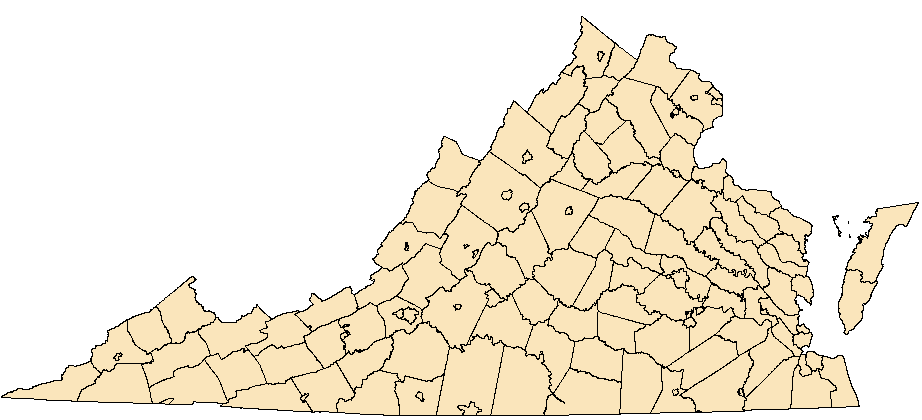Gomphus consanguis (Selys, 1879)
Cherokee Clubtail
NatureServe Global Rank: G3
Virginia State Rank: S2
VA DGIF Tier: II
Federal Legal Status: None
Virginia Legal Status: None
Description: The Cherokee Clubtail is a rare small clubtail with a black, mostly unmarked abdomen in males, and limited widening of the abdominal tip. Mature males are a light-green and black; females and immatures are yellow and black. Wingtips may be lightly colored, especially in females. There are two narrow dark lines on the side of the thorax, and one narrow black facial stripe. The size is 48-50 mm (2.0 inches).
Similar species: The Cherokee Clubtail is very similar to the closely related Sable Clubtail (G. rogersi), but that species has only one narrow line on the side of the thorax, and two facial stripes. See discussions and illustrations in Paulson (2011).
North American Range: The Cherokee Clubtail is known from only five states; Alabama, Georgia, North Carolina, Tennessee, and Virginia. It is regarded as critically imperiled in all but Virginia (NatureServe, 2011). In Virginia it is known from several far western counties.
VA Observations by Locality: Washington | Russell | Scott | Tazewell | Washington






Flight season and broods: Cherokee Clubtail adults are active between 20 May to 20 June in Virginia.
Aquatic Habitat: The Cherokee Clubtail prefers small, shady, mud-bottomed and spring-fed streams in mountainous areas.
Behavior and Ecology: Adults perch low on streamside vegetation.
Population trend and potential threats: Limited range and specific habitat requirements make the species especially vulnerable to habitat alteration and destruction.
Management practices: Monitor and protect occupied habitats.
References: NatureServe. 2011. NatureServe Explorer: An online encyclopedia of life [web application]. Version 7.1. NatureServe, Arlington, Virginia. Available http://www.natureserve.org/explorer (Accessed: April 14, 2012).
Paulson, Dennis. 2011. Dragonflies and Damselflies of the East. Princeton University Press. Princeton and Oxford. 538 pp.
Roble, Steven M. 2011. Dragonflies of Virginia- Flight dates. Unpub.
Tennessen, K. J., and A. E. Hopper. 2007. New distribution records of Gomphus consanguis (Odonata: Gomphidae) in Tennessee. Journal of the Tennessee Academy of Science 82: 40-41.
NatureServe. 2011. NatureServe Explorer: An online encyclopedia of life [web application]. Version 7.1. NatureServe, Arlington, Virginia. Available http://www.natureserve.org/explorer (Accessed: April 14, 2012).
Paulson, Dennis. 2011. Dragonflies and Damselflies of the East. Princeton University Press. Princeton and Oxford. 538 pp.
Roble, Steven M. 2011. Dragonflies of Virginia- Flight dates. Unpub.
Tennessen, K. J., and A. E. Hopper. 2007. New distribution records of Gomphus consanguis (Odonata: Gomphidae) in Tennessee. Journal of the Tennessee Academy of Science 82: 40-41.
Virginia Department of Conservation and Recreation, Natural Heritage Program, 600 E. Main St., 24th Floor, Richmond, VA 23219
This atlas was compiled
by the VA Natural Heritage Program with funds provided by the VA Dept. of Game and Inland Fisheries through a state wildlife grant
from U.S. Fish and Wildlife Service
Questions/Comments? Check the contacts page |
Internet Privacy Policy Statement
Last Modified: Friday, 26 February 2021, 03:21:56 PM